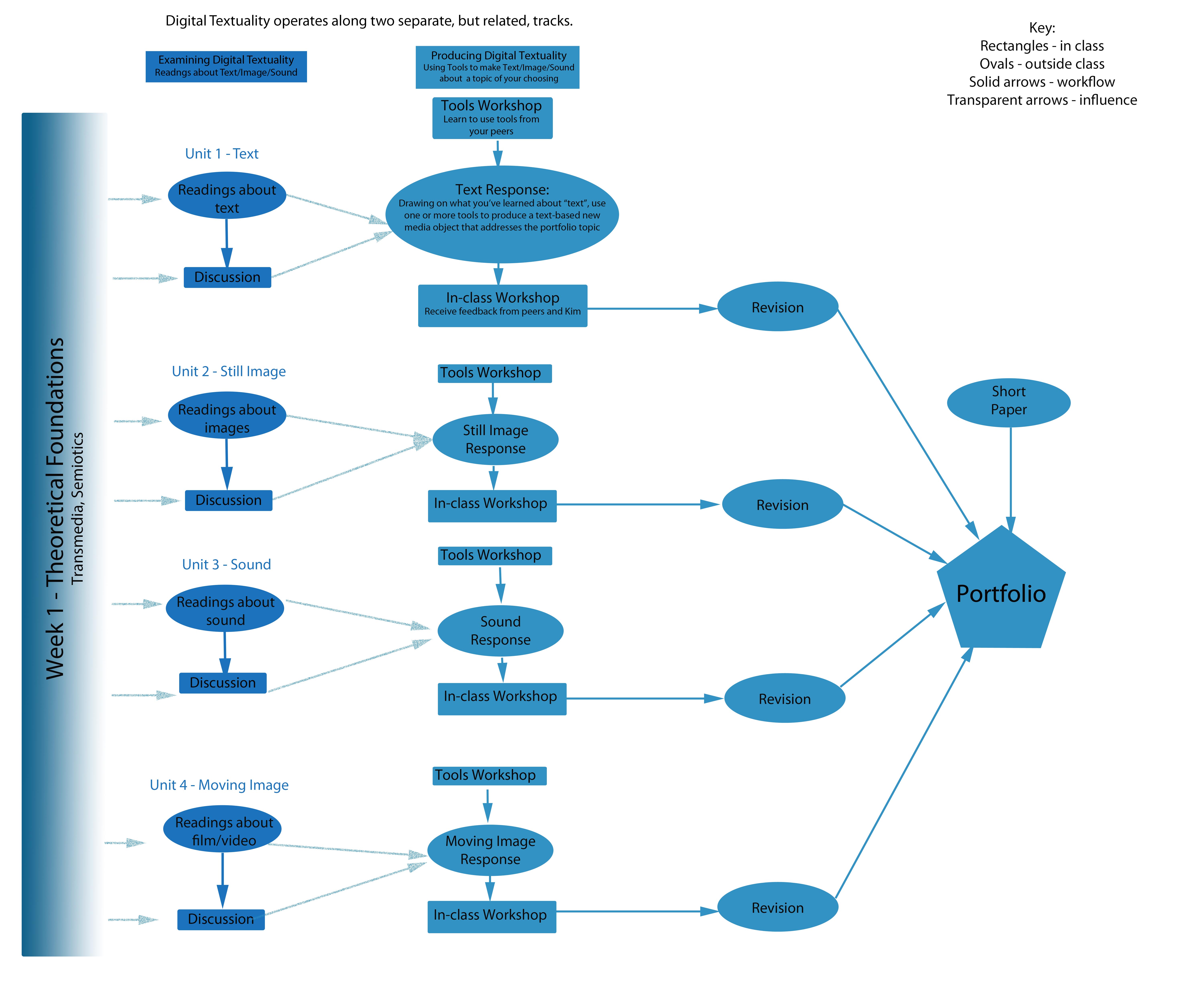Welcome to the wiki for Digital Textuality.
This will be the workspace for Digital Textuality (EMAC 6374) and Digital Writing (EMAC 4325) in Spring 2016.
One of the definitions of text is "something, such as a literary work or other cultural product, regarded as an object of critical analysis." (thefreedictionary.com). If we drill down far enough into any form of digital “text,” we arrive at the level of binary code: 1s and 0s. This includes other objects of critical analysis, such as digital images, sound files, animations, videos, etc. This material commonality draws our attention to the fact that any digital object has multiple layers – from the surface representation to the source code, down to those 1s and 0s. In addition to this kind of fundamental multi-mediality, it is very rare to encounter a digital text that is composed on the surface of only one type of media object. In other words, in digital textuality, words almost always co-exist with images, links, sound, and video, all built atop a foundation of code. This course takes these types of multi-mediality as its starting point and asks students to reconceive “digital textuality” as a more broad form of cultural product that can occur in multiple media formats and that explores the unique affordances of different kinds of text objects.
Through this production-intensive course, students will explore the theoretical and material connections between analog and digital textuality, centered on text, image, sound, and moving image. Students will apply their theoretical understanding of digital textuality to the production of a portfolio, composed of four separate digital media objects and a short paper, each of which foregrounds certain modes of making meaning.
In this course, students will:
- Become familiar with theoretical and material connections between analog and digital forms of text, image, sound, and moving image.
- Investigate the social and cultural implications of new forms of text, image, sound, and moving image.
- Investigate a variety of tools of digital production and utilize these tools to communicate ideas.
- Explore new models of digital production, including short forms and collaboration.
- Engage in processes of feedback and revision to improve their work.
Other course resources include:
Twitter hashtag: #digitaltext
For an alternative look at how the moving pieces of the course fit together, check out the visual overview of the semester:

Comments (0)
You don't have permission to comment on this page.